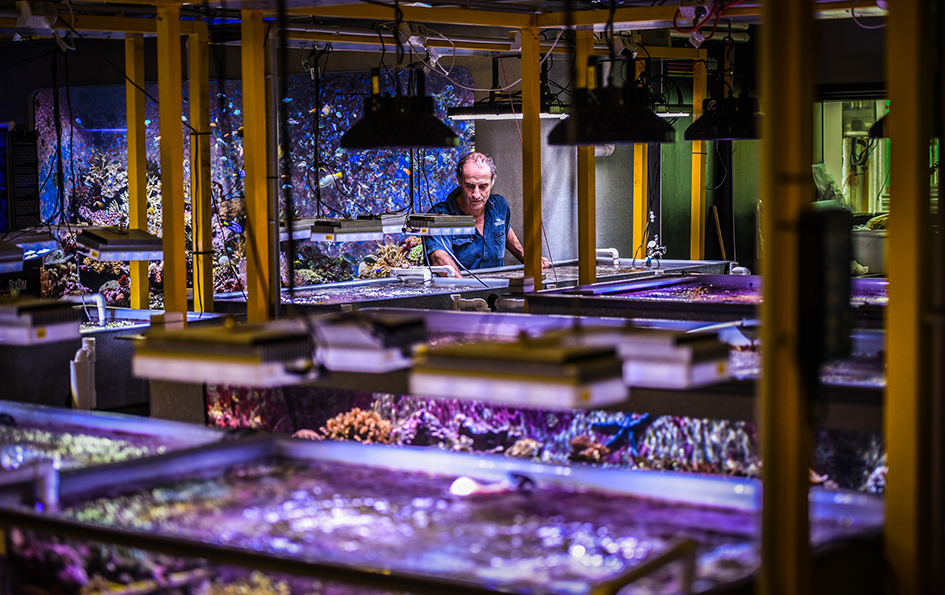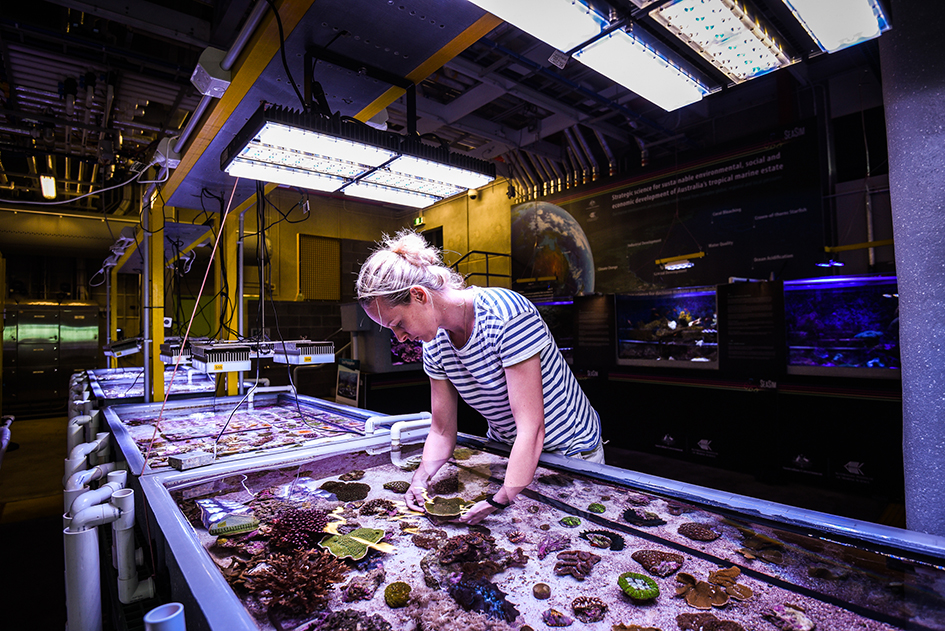40 Years of Monitoring the Great Barrier Reef, Australia
 Since 1972, the Australian Institute of Marine Science (AIMS), a Commonwealth statutory authority, has monitored the water quality and the health of the Great Barrier Reef. Their 40 years of data and environmental intelligence quantifies the changes in the reef over time and also helps in the contextual understanding of the natural and human pressures the reef is experiencing today. Research conducted at AIMS is crucial to monitoring the reef as well as informing government policy.
Since 1972, the Australian Institute of Marine Science (AIMS), a Commonwealth statutory authority, has monitored the water quality and the health of the Great Barrier Reef. Their 40 years of data and environmental intelligence quantifies the changes in the reef over time and also helps in the contextual understanding of the natural and human pressures the reef is experiencing today. Research conducted at AIMS is crucial to monitoring the reef as well as informing government policy.
Sadly, the Great Barrier Reef faces significant and ongoing threats, with UNESCO making it clear they hold serious concerns for the reef’s future. However, in a recent draft decision UNESCO stopped short of listing the reef as being “in danger”. The health of the Great Barrier Reef and its surrounding waters is important because it is the most biodiverse of all World Heritage sites and it is a significant contributor to the Australian economy, supporting 64,000 jobs and contributing $6.4bn annually.
Technology and Innovation- Dr Mushen Aljada, is the Manager of the AIMS Townsville Laboratories, based at Cape Ferguson in FNQ. Over time Dr Aljada has witnessed the technological change that has taken analytical laboratories such as AIMS from whiteboards and lab books, to the cloud and electronic data that can be controlled, searched and shared. Manual tasks traditionally carried out by marine scientists and chemists are being replaced by proven technologies such as wireless data and automated wet chemistry.
Collecting Data- AIMS’ two ocean going vessels, and their on-board laboratories support scientists in the field. Rough seas, vibration from the vessel’s motors, and the power requirements of laboratory analyzers make on-board analysis challenging. Developments in hand-held analyzers and emerging technologies provide solutions to these challenges and supply scientists in the field with preliminary results. Diving has traditionally been used to collect data at sea, however it is costly, time consuming and potentially hazardous. AIMS is active in emerging technologies that minimize the need to dive and allow the collection of data from the sea surface. By using the emerging eDNA technology (environment DNA), Crown of Thorns starfish can be detected and monitored from the analysis of urine and biological substances present on the sea surface. The results allow scientists to detect increased Crown of Thorns activity without diving. Emerging technologies like eDNA are less expensive than traditional methods of gathering data and are capable of achieving the same results or better.
Drones have also just started to play a role in gathering data. Drones enable scientists to collect high resolution images of the sea and monitor coral bleaching episodes without diving. The current coral bleaching episode is unprecedented and right now is affecting two thirds of the reef. Advances in 3G and 4G technology also facilitate the wireless gathering of data from remote sea locations, so water quality and parameters of interest can be monitored with remote sensors, removing the most expensive part of marine research – the cost of sending a vessel out to sea.
Improving Analysis Without Increasing Costs- Unique to Australia is the one-of-a-kind government initiative SeaSim. SeaSim is the National Sea-Simulator, a facility that simulates most parameters in sea environments in any of its dozens of tanks. At SeaSim it is possible to collect eggs from spawning coral and understand exactly the impact of environmental issues such as CO2, mercury, etc, and it is here that scientists can monitor coral in real-time and research the effect of any parameters without going to sea.
Automating Wet Chemistry- With the Analytical Laboratory receiving over 15,000 samples per year requiring nutrient analysis a high level of automation is essential to optimize chemist’s time, maximize quality and ensure accurate and precise data. AIMS uses fully automated SEAL five-channel segmented flow continuous analyzers to simultaneously measure five nutrients important in determining the health of water- dissolved inorganic nitrate, nitrite, ammonium, phosphate and silicate at ultra-low levels. The ultra-low detection limits achieved with this instrument are essential to fulfilling the analytical needs of the researchers wishing to analyze low nutrient concentration in seawater, whilst also providing the capability of analyzing fresh and brackish waters, including soil water, sediment pore water and ground water. A second SEAL 5 channel segmented flow analyzer has recently been added to the laboratory to cater for increased demand for nutrient analysis.
Engaging with the Community- Even though technology has advanced the real-time collection of data, it is still not possible to see every inch of the reef. AIMS relies heavily on reports from citizen scientists and volunteers, with a large number of volunteers both in the field and on-site. Reports from tourism operators, boat operators, fisheries and the community is still a vital component in monitoring the reef. When AIMS held a public open day the North Queensland community was able to visit Cape Ferguson and tour the facilities. Whilst the AIMS’ teams are very much aware of the reef’s value to the community and the economy in North Queensland, the public response to the open day blew them away. 15,000 members of the public visited Cape Ferguson, demonstrating a phenomenal level of community interest, particularly when you consider that Cape Ferguson is 50km from Townsville in the National Park. Unsurprisingly, this response highlights the community’s level of interest in the marine environment and the work of AIMS in monitoring the on-going health of the Great Barrier Reef.
 About AIMS
About AIMS
- The Australian Institute of Marine Science (AIMS) has advanced laboratory facilities in Townsville, Perth and Darwin.
- The Townsville headquarters is home to 19 laboratories specializing in advanced analytics, chemistry, biomolecular analysis, biology, chromatography and symbiont culture.
- Two ocean-going research vessels with on-board laboratories complement the land based facilities and support scientists in the field.
- Townsville boasts a state-of-the art marine aquarium, the National Sea Simulator (SeaSim). SeaSim allows Australian and international scientists to research and model complex environmental changes, critical to understanding how marine organisms acclimatise and adapt to the changing environment over longer time periods.
Find out more about the Australian Institute of Marine Science
This article originally appeared in the SEAL Users Newsletter, Spring 2017 (Australian edition). Photos supplied. Copyright of AIMS. Photographer: Christian Miller